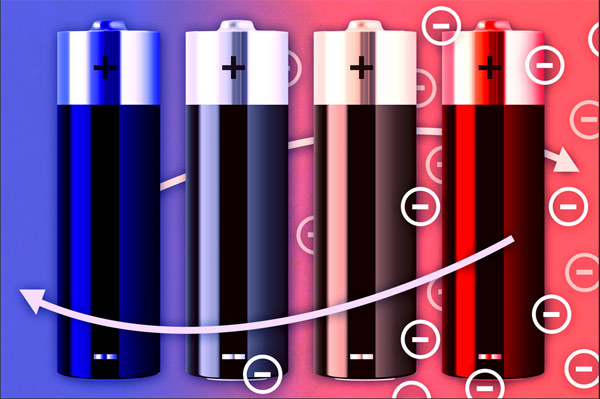It’s been more than a decade researchers across the globe are working towards harnessing waste energy into something useful. Most of the times, their energy focused around thermoelectric devices but efficiency of this approach was limited to the accessibility of materials
Lately, researchers at Stanford University in collaboration with experts from Massachusetts Institute of Technology have come up with an innovative technology, which captures and morphs waste heat into electricity. The approach holds the low temperature waste heat, that is, less than 100 degrees Celsius.
Generally, the byproducts of industrial processes and electric power plants consist of excessive heat and the team envisions taking advantage of this temperature gradient of course at an industrial scale.
Thermogalvanic Effect on rechargeable battery
The idea is based on thermogalvanic effect, which implies, that the electrical energy within a rechargeable battery is contingent on temperature. In order to harvest the thermal energy, the researchers subjected a battery into a process corresponding to four steps that were, heating, charging, cooling and discharging.
Heating-charging-cooling Approach
The process started by heating an uncharged battery at about 60 C. Then voltage is supplied to the same battery, which was in the warm state. After being loaded with full charge, the battery was allowed to cool down. Here the role of thermogalvanic effect comes into play. Voltage or the electrical energy increases as the temperature slashes down. Hence, upon cooling it was observed that the battery was delivering more electricity than it was required while charging. 5.7% of electricity-conversion efficiency was recorded, an efficiency which is nearly double than the traditional thermoelectric devices.
Heat that was added to the system while the process started morphed into the extra heat, which was being observed at the finishing of the process, claimed Cui, one of the lead researchers.
Researchers aim to harvest the low-grade heat, which accounts for nearly one third of all energy consumption in the US.
Attractive efficiency
No doubts the new system of harnessing energy is better than the conventional thermoelectric devices but it has lesser power density. Hence, the approach requires more research so that its long-term reliability can be strengthen upon for future applications. Low-grade waste heat is nearly everywhere on the planet earth and exploring the thermogalvanic effect for the same would definitely give a boost to all futuretech energy harvesting applications.
Source: Stanford News




